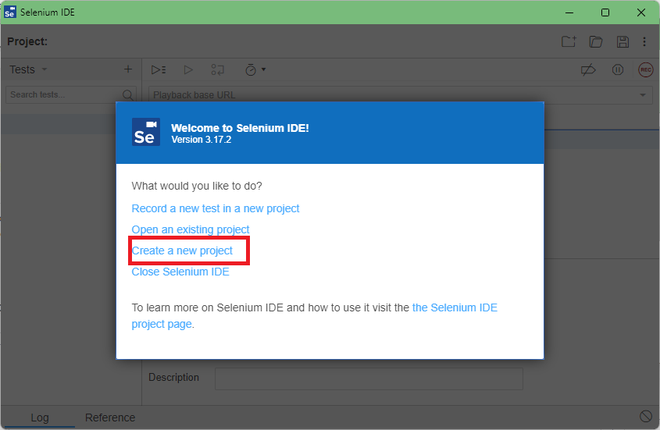A popular open-source tool for testing online applications is Selenium IDE Login Test, which automates web browsers. An easy-to-use interface for recording, editing, and replaying test scripts is offered by the Selenium IDE. One of the most popular automated tests, the login test from the Selenium IDE, will be the main topic of this article.
One essential feature of online apps is login functionality. It is the initial stage of granting users access to various services and functionalities and authenticating them. However, testing login functionality may be a laborious and time-consuming process, particularly if the application needs many users to log in using distinct credentials. By using Selenium IDE to automate the login test, you can confirm that the login functionality functions as expected while also saving time and effort.
Let’s first review the fundamentals of the Selenium IDE and the login capability before getting into the specifics of the login test. You can learn more about the Selenium IDE Login Test by checking out the Selenium course online.
Selenium IDE Overview
Without writing any code, testers may record, edit, and replay tests using the Selenium IDE browser extension. Numerous scripting languages are supported, such as HTML, Java, C#, Python, and Ruby. Tests can be conducted using the Selenium IDE on a variety of browsers, such as Firefox, Chrome, Edge, and Safari.
The toolbar, the test case pane, and the test script pane make up the three primary parts of the simple Selenium IDE user interface. Test case creation, open, save, and run buttons are located on the toolbar. The test cases are shown in the test case pane, and the test script for the chosen test case is shown in the test script pane.
Selenium IDE Login Functionality Overview
Web applications frequently have login functionality, which requires the user to authenticate themselves by supplying their credentials. Usually consisting of a username and password, the credentials are verified by the application’s user database. The user is given access to the features and functionalities of the program after the credentials have been verified.
Additional security measures, such as two-factor authentication or captcha verification, might be incorporated into the login functionality. These extra safeguards prevent unwanted access and guarantee that the user is who they say they are.
Selenium IDE Login Test
The Selenium IDE Login Test steps necessary to authenticate a user with valid credentials are recorded as part of the Selenium IDE login test. Next, more stages for invalid credentials or extra security measures might be added to the recorded test script. Replaying the modified script will allow you to test the login functionality in various conditions.
Recording the Login Test
To capture the Selenium IDE login test, take the following actions:
- Launch the browser extension for Selenium IDE.
- Select the toolbar button labelled “Record a new test case.”
- After giving the test case a name, press the “Record” button.
- Proceed to the online application’s login page.
- Enter the correct data in the username and password fields.
- Select “Login” from the menu.
- Examine the home page for a certain element to confirm that the user is authenticated.
The instructions for navigating to the login page, entering the credentials, and confirming the user’s identity should all be included in the recorded test script.
Editing Selenium IDE Login Test
The test script can be modified after it has been recorded to incorporate more stages for incorrect credentials or extra security precautions. The test script, for instance, might be modified to incorporate the subsequent scenarios:
1. Invalid Credentials: To confirm that the user is not authenticated, the test script can be modified to enter faulty credentials.
2. Two-factor authentication: The actions necessary for two-factor authentication, such as providing a verification code or responding to a security question, can be added to the test script.
3. Captcha Verification: The steps necessary for captcha verification, like entering the characters shown in the image, can be included in the test script.
Replaying Selenium IDE Login Test
Replaying the edited test script will allow you to verify the login’s functionality in various scenarios. The steps below can be used to replay the login test:
- Launch the browser extension for Selenium IDE.
- From the test case tab, choose the test case.
- Select the toolbar’s “Run current test” button.
- Check that the test is completed successfully and, depending on the situation, whether the user is authenticated or not.

The test script pane displays the test results, allowing you to view and resolve any issues or failures.
Benefits of Selenium IDE Login Test
There are various advantages of automating the Selenium IDE Login Test, such as time efficiency, consistency, accuracy, and cross-browser testing. Automation eliminates human error, ensures repeated tests are executed consistently, and allows for faster identification of issues. Additionally, automated tests are reusable, cost-effective, and scalable, helping developers quickly perform regression testing and receive faster feedback. This significantly accelerates the development process while maintaining high-quality standards.
1. Time-saving: Compared to manually testing the login functionality, automating the login test with Selenium IDE saves time and effort.
2. Reusability: You can test the login functionality in various settings and on other browsers by using the recorded test script again.
3. Accuracy: By using the Selenium IDE to automate the login test, accuracy and consistency are guaranteed.
4. Coverage: Using the Selenium IDE to automate the login test guarantees that it covers every step needed for authentication, including extra security precautions.
5. Debugging: The Selenium IDE makes it simple to debug test results, allowing for the fast identification and correction of any mistakes or failures.
Conclusion
To sum up, automating the Selenium IDE Login Test can guarantee that the login functionality functions as intended while also saving time and effort. It is possible to add more steps for invalid credentials or extra security measures to the recorded test script. To test the login functionality in various settings, it can be replayed. There are several advantages to automating the login test with Selenium IDE, such as time savings, accuracy, coverage, reusability, and debugging. For testing login functionality and other web application functionalities, Selenium IDE is a helpful tool. Check out the Selenium certification course to learn more.




























